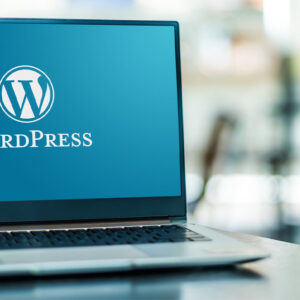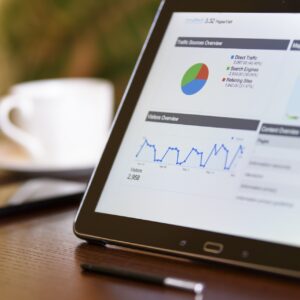Amazon Pay-Per-Click (PPC) advertising is one of the most effective tools for boosting your product’s visibility and driving sales on the platform. However, with several types of Amazon PPC campaigns available, it can be confusing to decide which is best suited for your business. This guide will explain the different types of Amazon PPC campaigns, their features, benefits, and when to use them.
What is Amazon PPC?
Amazon PPC is a form of paid advertising where sellers bid on specific keywords. When shoppers search for these keywords, ads appear in prominent positions such as the search results page or product pages. Sellers pay a fee each time a shopper clicks on their ad.
By using PPC campaigns strategically, you can:
- Increase product visibility.
- Drive more traffic to your listings.
- Boost sales and improve rankings.
Types of Amazon PPC Campaigns
Amazon offers three main types of PPC campaigns. Each serves a unique purpose and is tailored to different advertising objectives.
1. Sponsored Products
Sponsored Products are the most popular type of PPC campaign on Amazon. These ads promote individual product listings and appear directly in search results or on product detail pages.
Key Features:
- Targets individual products.
- Allows both manual and automatic targeting.
- Ads are keyword-driven and appear based on relevant search terms.
Benefits:
- Increases visibility for specific products.
- Suitable for promoting bestsellers or new launches.
- Helps improve organic rankings over time.
When to Use:
- When launching a new product.
- To boost sales for a slow-moving item.
- To compete for high-conversion keywords.
Example: A seller of reusable water bottles uses a Sponsored Products campaign to target keywords like “BPA-free water bottle” and “eco-friendly bottle.”
2. Sponsored Brands
Sponsored Brands ads are designed to increase brand visibility. These ads showcase a collection of your products and feature your logo and a custom headline. They appear at the top of search results, making them ideal for driving brand awareness.
Key Features:
- Allows custom headlines, logos, and links to a product collection or Storefront.
- Ads can highlight multiple products.
- Focuses on keyword-based targeting.
Benefits:
- Enhances brand recognition.
- Directs shoppers to your Amazon Storefront or a curated product page.
- Great for cross-selling related products.
When to Use:
- To build brand awareness.
- To promote complementary or seasonal products.
- For established sellers looking to enhance their brand presence.
Example: A brand selling fitness gear uses Sponsored Brands to promote a bundle that includes yoga mats, resistance bands, and dumbbells under the headline “Gear Up for Your Fitness Journey.”
3. Sponsored Display
Sponsored Display campaigns are designed to target shoppers both on and off Amazon. These ads focus on retargeting customers who have viewed your products or similar ones, even if they haven’t made a purchase.
Key Features:
- Retargets audiences across Amazon and external websites.
- Automatically generates ad creatives.
- Targets shoppers based on interests or behaviors.
Benefits:
- Re-engages potential customers who abandoned their purchase.
- Increases visibility outside Amazon’s platform.
- Requires minimal effort to set up.
When to Use:
- To retarget high-intent shoppers.
- To reach audiences beyond Amazon.
- For sellers with products in competitive niches.
Example: A seller of home office chairs uses Sponsored Display ads to retarget shoppers who viewed their product but didn’t purchase, showing them ads on Amazon and partner websites.
Automatic vs. Manual Targeting
Amazon PPC campaigns can use either automatic or manual targeting methods. Understanding the difference is key to optimizing your ad spend.
Automatic Targeting
- Amazon selects keywords and placements based on your product information.
- Ideal for beginners or product launches.
- Requires less effort but provides less control over targeting.
Manual Targeting
- Sellers choose specific keywords, match types, and bids.
- Ideal for advanced campaigns.
- Offers more control and potential for higher ROI.
Tip: Start with automatic targeting to gather data, then switch to manual targeting for fine-tuned campaigns.
Match Types in Manual Targeting
When using manual targeting, you can choose from three match types to control how your ads appear for different search queries:
1. Broad Match
- Targets a wide range of keywords, including synonyms and related terms.
- Example: A broad match for “wireless earbuds” might trigger ads for “Bluetooth earbuds” or “best wireless headphones.”
2. Phrase Match
- Targets searches containing your exact phrase in the correct order.
- Example: A phrase match for “wireless earbuds” might trigger ads for “best wireless earbuds” but not “earbuds wireless Bluetooth.”
3. Exact Match
- Targets only the exact keyword or very close variants.
- Example: An exact match for “wireless earbuds” will only trigger ads for that term.
Tips to Optimize Amazon PPC Campaigns
To make the most of your PPC campaigns, follow these best practices:
- Conduct Keyword Research: Use tools like Amazon’s Keyword Planner or third-party software to find high-converting keywords.
- Set a Budget: Start small and increase your ad spend as you identify winning strategies.
- Analyze Performance: Regularly review metrics like Click-Through Rate (CTR), Conversion Rate (CR), and Advertising Cost of Sales (ACoS).
- Use Negative Keywords: Exclude irrelevant search terms to avoid wasting your budget.
- Test and Adjust: Experiment with different ad types, bids, and targeting methods.
Conclusion
Amazon PPC campaigns are essential for increasing visibility and driving sales on the platform. By understanding the different types of campaigns—Sponsored Products, Sponsored Brands, and Sponsored Display—you can tailor your strategy to meet specific goals. Combine this with regular performance analysis and optimization to achieve maximum ROI. Whether you’re a new seller or an experienced one, mastering Amazon PPC can significantly boost your business’s success.
FAQs:
What are Sponsored Products campaigns on Amazon?
Sponsored Products campaigns promote individual product listings to appear in search results or product detail pages. Sellers can target specific keywords or let Amazon choose keywords automatically. These campaigns are great for driving traffic to specific products.
How do Sponsored Brands campaigns work?
Sponsored Brands campaigns display a custom ad featuring your brand logo, a headline, and multiple products. These ads appear at the top of search results, helping you increase brand visibility and promote a collection of products simultaneously.
What are Sponsored Display campaigns?
Sponsored Display campaigns show ads on and off Amazon, targeting customers who have previously interacted with your products or similar ones. These campaigns are great for remarketing and attracting customers who might be interested in your products.
How does automatic targeting work in Sponsored Products campaigns?
In automatic targeting, Amazon automatically selects the most relevant keywords for your products based on your product’s details. This is ideal for sellers who are new to Amazon PPC or want to save time on keyword research.
What is manual targeting in Sponsored Products campaigns?
In manual targeting, the seller selects specific keywords they want to target. This allows more control over the campaign and helps optimize performance by targeting high-converting keywords.
When should I use Sponsored Brands campaigns?
Sponsored Brands campaigns are perfect for sellers aiming to boost brand awareness and showcase a group of products. They are ideal when you want to highlight your brand and products in a prominent location at the top of search results.
What are the targeting options in Sponsored Brands campaigns?
Sponsored Brands campaigns allow targeting by keywords or product categories. You can either manually select keywords or let Amazon automatically target relevant terms based on your products.
What is the benefit of Sponsored Display campaigns for remarketing?
Sponsored Display campaigns allow you to target customers who have already viewed your product or similar products. This remarketing strategy helps bring back potential buyers who didn’t convert the first time.
Can I use Sponsored Products, Sponsored Brands, and Sponsored Display together?
Yes, many sellers use a combination of these campaign types to achieve different goals. Sponsored Products drive immediate sales, Sponsored Brands build long-term brand recognition, and Sponsored Display retargets customers to maximize conversions.
What is the difference between Sponsored Products and Sponsored Brands?
Sponsored Products focuses on individual product listings and appears within search results, whereas Sponsored Brands promotes a collection of products along with your brand’s logo and a custom headline, usually at the top of the search results. Sponsored Brands help with brand awareness, while Sponsored Products focus on direct sales.





